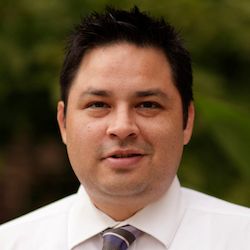Children Exposed to Drugs, Violence Experience Higher Incidence of HIV as Adults
Can the social and psychological traumas experienced as a teenager increase the likelihood of behavior in later adulthood that risks HIV infection?
David Cordova, PhD, assistant professor, social work, University of Michigan

David Cordova, PhD
Evidence suggests that exposure to certain types of mental and physical stress in adolescence may make it more likely that as adults they will practice behaviors that increase the risk of HIV infection.
A longitudinal study conducted by the University of Michigan over 18 years, from Sept. 1994—May 2013, studied the effects exposure to illicit drug use, and violence had on adolescents in later adulthood.
The findings suggest that exposure to these factors could substantially increase the likelihood of HIV risky behavior.
The study involved 850 Michigan students who were mostly of African-American descent. Respondents were questioned regarding their sexual activity and behavior, perceived mental health, and whether they were either victims or witnesses of violence.
Respondents were also asked about their social conditions, such as families, peers, and other community factors. Starting at about age 15, participants were assessed a total of 6 times during the study until they reached 32 years of age.
Researchers discovered young adults exposed to these risk factors also engaged in the type of sexual behavior that could increase the chance of contracting an HIV infection more frequently — significant differences occurred depending on whether respondents reported a greater or lesser degree of exposure.
According to the study’s findings; 1 out of 4 respondents that experienced a higher frequency of co-occurring mental and social risk factors in adolescence were also more likely to report having unprotected intercourse with recent partners, as well as sexual intercourse with partners they recently met in adulthood.
Furthermore, those respondents were also more likely to use illegal drugs prior to sexual intercourse and have 4 or more sexual partners. These high frequency respondents were therefore more vulnerable to HIV infection than those who reported a lower frequency of violence, drug use and mental distress.
The impact of these experiences was evidenced by some of these HIV-risky behaviors (initially observed in adolescence), also extending into middle adulthood.
"Our findings support the notion that the increasing frequency of psychosocial risk factors experienced during adolescence may have effects on HIV risk behaviors decades later," lead study author David Córdova, PhD, assistant professor, social work, University of Michigan, stated.
“Given that this was a secondary data analysis, we are limited by the data collected,” Córdova told MD Magazine when asked about the effect of exposure on the incidence of homosexual and bisexual behavior that increases the risk of contracting HIV. “Unfortunately, data on sexual abuse and bisexual/same-sex behaviors were not collected, and these may be important factors to examine in future research.”
Although evidence suggests that exposure to drugs and violence in adolescence increases the likelihood of behaviors that increase the incidence of HIV infection, there is a substantial caveat.
Córdova states that since the study’s respondents were mostly African-American, the findings may not apply to other adolescent populations.